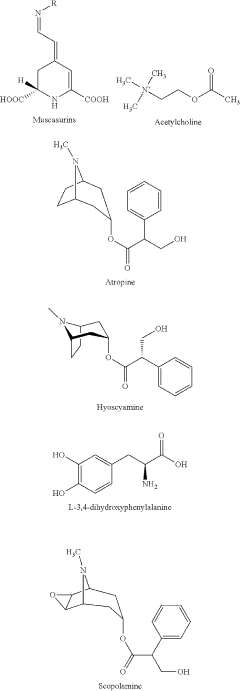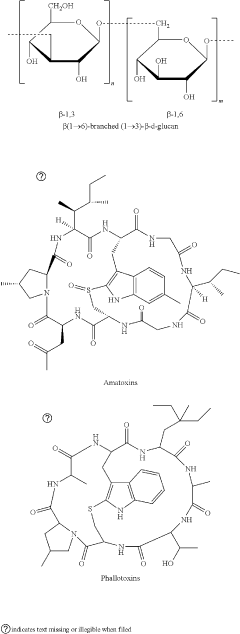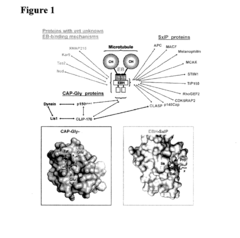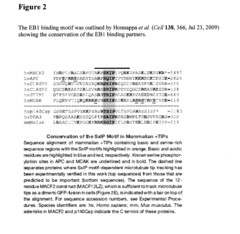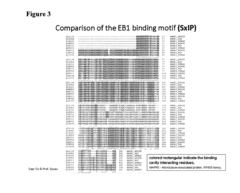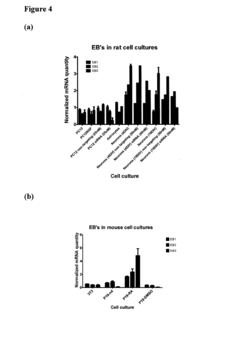Dynamic Polarization Effects of Muscimol in Neuromodulators
JUL 4, 20259 MIN READ
Generate Your Research Report Instantly with AI Agent
Patsnap Eureka helps you evaluate technical feasibility & market potential.
Muscimol Neuromodulation Background
Muscimol, a potent GABA-A receptor agonist, has been a subject of intense research in the field of neuromodulation for several decades. This naturally occurring psychoactive compound, found in various species of mushrooms, particularly Amanita muscaria, has garnered significant attention due to its profound effects on the central nervous system.
The history of muscimol in neuroscience dates back to the 1960s when it was first isolated and characterized. Initially, it was primarily studied for its psychoactive properties and potential as a tool for understanding GABAergic neurotransmission. However, as research progressed, scientists began to recognize its potential as a neuromodulator with diverse applications in both basic neuroscience and clinical settings.
Muscimol's primary mechanism of action involves its high affinity for GABA-A receptors, where it acts as a potent agonist. This interaction leads to increased chloride ion influx into neurons, resulting in hyperpolarization and decreased neuronal excitability. This fundamental property has made muscimol an invaluable tool for investigating inhibitory neurotransmission and its role in various neurological processes.
Over the years, the scope of muscimol research has expanded significantly. From initial studies focusing on its effects on neurotransmission, researchers have delved into its potential applications in treating various neurological and psychiatric disorders. These include epilepsy, anxiety disorders, and sleep disturbances, among others. The compound's ability to modulate neural activity in specific brain regions has also made it a valuable tool in functional neuroanatomy studies.
Recent advancements in neuroscience techniques have further propelled muscimol research. The development of optogenetic and chemogenetic approaches has allowed for more precise spatial and temporal control of muscimol's effects, enabling researchers to study its impact on specific neural circuits with unprecedented accuracy. This has opened new avenues for understanding the dynamic polarization effects of muscimol in neuromodulation.
The current focus on muscimol's dynamic polarization effects represents a cutting-edge area of research. This approach seeks to understand how muscimol's modulatory effects on neural activity can change over time and in response to various physiological and environmental factors. Such research is crucial for developing more targeted and effective neuromodulation strategies, potentially leading to novel therapeutic approaches for a range of neurological conditions.
As we look towards the future, the study of muscimol in neuromodulation continues to evolve. Emerging areas of interest include its potential role in neuroplasticity, its interactions with other neurotransmitter systems, and its effects on large-scale brain networks. These ongoing investigations promise to deepen our understanding of neural function and pave the way for innovative treatments in neurology and psychiatry.
The history of muscimol in neuroscience dates back to the 1960s when it was first isolated and characterized. Initially, it was primarily studied for its psychoactive properties and potential as a tool for understanding GABAergic neurotransmission. However, as research progressed, scientists began to recognize its potential as a neuromodulator with diverse applications in both basic neuroscience and clinical settings.
Muscimol's primary mechanism of action involves its high affinity for GABA-A receptors, where it acts as a potent agonist. This interaction leads to increased chloride ion influx into neurons, resulting in hyperpolarization and decreased neuronal excitability. This fundamental property has made muscimol an invaluable tool for investigating inhibitory neurotransmission and its role in various neurological processes.
Over the years, the scope of muscimol research has expanded significantly. From initial studies focusing on its effects on neurotransmission, researchers have delved into its potential applications in treating various neurological and psychiatric disorders. These include epilepsy, anxiety disorders, and sleep disturbances, among others. The compound's ability to modulate neural activity in specific brain regions has also made it a valuable tool in functional neuroanatomy studies.
Recent advancements in neuroscience techniques have further propelled muscimol research. The development of optogenetic and chemogenetic approaches has allowed for more precise spatial and temporal control of muscimol's effects, enabling researchers to study its impact on specific neural circuits with unprecedented accuracy. This has opened new avenues for understanding the dynamic polarization effects of muscimol in neuromodulation.
The current focus on muscimol's dynamic polarization effects represents a cutting-edge area of research. This approach seeks to understand how muscimol's modulatory effects on neural activity can change over time and in response to various physiological and environmental factors. Such research is crucial for developing more targeted and effective neuromodulation strategies, potentially leading to novel therapeutic approaches for a range of neurological conditions.
As we look towards the future, the study of muscimol in neuromodulation continues to evolve. Emerging areas of interest include its potential role in neuroplasticity, its interactions with other neurotransmitter systems, and its effects on large-scale brain networks. These ongoing investigations promise to deepen our understanding of neural function and pave the way for innovative treatments in neurology and psychiatry.
Clinical Applications
The clinical applications of muscimol's dynamic polarization effects in neuromodulators represent a promising frontier in neuroscience and medicine. Muscimol, a potent GABA-A receptor agonist, has shown remarkable potential in modulating neural activity with high precision and temporal control. This characteristic makes it an attractive candidate for various therapeutic interventions, particularly in neurological and psychiatric disorders.
In the field of epilepsy management, muscimol's ability to enhance inhibitory neurotransmission has been explored as a novel approach to seizure control. By leveraging its dynamic polarization effects, researchers have developed targeted delivery systems that can modulate specific neural circuits implicated in epileptogenesis. This approach offers the potential for more localized and efficient seizure suppression compared to traditional systemic antiepileptic medications, potentially reducing side effects and improving patient outcomes.
Muscimol's neuromodulatory properties have also shown promise in the treatment of anxiety disorders. Clinical trials have investigated the use of muscimol-based interventions to regulate hyperactive neural circuits associated with anxiety. The dynamic polarization effects allow for fine-tuned modulation of neural activity, potentially offering a more nuanced approach to anxiety management than current pharmacological treatments.
In the realm of pain management, muscimol's ability to modulate neural signaling has been explored as a potential alternative to opioid-based therapies. Preclinical studies have demonstrated that targeted application of muscimol can effectively reduce pain perception by modulating nociceptive pathways. This approach could lead to the development of non-addictive pain management strategies, addressing the ongoing opioid crisis.
Neurodegenerative disorders, such as Parkinson's disease, have also been identified as potential targets for muscimol-based therapies. By selectively modulating neural circuits affected by the disease, researchers aim to alleviate motor symptoms and potentially slow disease progression. Clinical trials are underway to evaluate the efficacy of muscimol-based interventions in improving motor function and quality of life for Parkinson's patients.
The field of neurorehabilitation has also begun to explore the potential of muscimol in facilitating neural plasticity and recovery after brain injury. By strategically applying muscimol to specific brain regions, clinicians aim to promote adaptive neuroplasticity and enhance functional recovery in stroke patients and those with traumatic brain injuries.
As research in this field progresses, the development of advanced drug delivery systems and neuroimaging techniques will be crucial in optimizing the clinical applications of muscimol's dynamic polarization effects. These advancements will enable more precise targeting of neural circuits and real-time monitoring of treatment efficacy, paving the way for personalized neuromodulatory therapies tailored to individual patient needs.
In the field of epilepsy management, muscimol's ability to enhance inhibitory neurotransmission has been explored as a novel approach to seizure control. By leveraging its dynamic polarization effects, researchers have developed targeted delivery systems that can modulate specific neural circuits implicated in epileptogenesis. This approach offers the potential for more localized and efficient seizure suppression compared to traditional systemic antiepileptic medications, potentially reducing side effects and improving patient outcomes.
Muscimol's neuromodulatory properties have also shown promise in the treatment of anxiety disorders. Clinical trials have investigated the use of muscimol-based interventions to regulate hyperactive neural circuits associated with anxiety. The dynamic polarization effects allow for fine-tuned modulation of neural activity, potentially offering a more nuanced approach to anxiety management than current pharmacological treatments.
In the realm of pain management, muscimol's ability to modulate neural signaling has been explored as a potential alternative to opioid-based therapies. Preclinical studies have demonstrated that targeted application of muscimol can effectively reduce pain perception by modulating nociceptive pathways. This approach could lead to the development of non-addictive pain management strategies, addressing the ongoing opioid crisis.
Neurodegenerative disorders, such as Parkinson's disease, have also been identified as potential targets for muscimol-based therapies. By selectively modulating neural circuits affected by the disease, researchers aim to alleviate motor symptoms and potentially slow disease progression. Clinical trials are underway to evaluate the efficacy of muscimol-based interventions in improving motor function and quality of life for Parkinson's patients.
The field of neurorehabilitation has also begun to explore the potential of muscimol in facilitating neural plasticity and recovery after brain injury. By strategically applying muscimol to specific brain regions, clinicians aim to promote adaptive neuroplasticity and enhance functional recovery in stroke patients and those with traumatic brain injuries.
As research in this field progresses, the development of advanced drug delivery systems and neuroimaging techniques will be crucial in optimizing the clinical applications of muscimol's dynamic polarization effects. These advancements will enable more precise targeting of neural circuits and real-time monitoring of treatment efficacy, paving the way for personalized neuromodulatory therapies tailored to individual patient needs.
Current Challenges
The research on dynamic polarization effects of muscimol in neuromodulators faces several significant challenges that hinder progress in this field. One of the primary obstacles is the complexity of neural networks and the intricate interactions between various neurotransmitters and neuromodulators. This complexity makes it difficult to isolate and study the specific effects of muscimol on neural polarization dynamics.
Another major challenge is the limited spatial and temporal resolution of current neuroimaging techniques. While advanced imaging methods have improved our ability to observe brain activity, they still lack the precision required to capture the rapid and subtle changes in neural polarization induced by muscimol. This limitation hampers researchers' ability to fully understand the dynamic nature of these effects.
The heterogeneity of neural populations also presents a significant hurdle. Different types of neurons and brain regions may respond differently to muscimol, making it challenging to generalize findings across diverse neural circuits. This variability necessitates extensive studies across multiple brain areas and cell types, which is both time-consuming and resource-intensive.
Furthermore, the dose-dependent effects of muscimol add another layer of complexity to the research. Determining the optimal concentration of muscimol for studying polarization effects without inducing unintended side effects or altering overall neural function remains a delicate balance. This challenge is compounded by individual variations in drug metabolism and sensitivity among research subjects.
The dynamic nature of neural activity itself poses a significant challenge. Neural circuits are constantly adapting and changing, making it difficult to establish stable baseline measurements and isolate the specific effects of muscimol from ongoing neural plasticity. This dynamism requires sophisticated experimental designs and data analysis techniques to separate signal from noise.
Ethical considerations and limitations in human studies also impede progress in this field. While animal models provide valuable insights, translating these findings to human neural systems involves additional complexities and regulatory hurdles. The inability to conduct certain types of invasive experiments in humans restricts the depth of understanding that can be achieved in clinical settings.
Lastly, the interdisciplinary nature of this research presents both opportunities and challenges. Integrating knowledge from neuroscience, pharmacology, physics, and computational modeling is essential for a comprehensive understanding of muscimol's dynamic polarization effects. However, bridging these diverse fields and fostering effective collaboration among experts with different backgrounds remains a significant challenge in advancing this area of study.
Another major challenge is the limited spatial and temporal resolution of current neuroimaging techniques. While advanced imaging methods have improved our ability to observe brain activity, they still lack the precision required to capture the rapid and subtle changes in neural polarization induced by muscimol. This limitation hampers researchers' ability to fully understand the dynamic nature of these effects.
The heterogeneity of neural populations also presents a significant hurdle. Different types of neurons and brain regions may respond differently to muscimol, making it challenging to generalize findings across diverse neural circuits. This variability necessitates extensive studies across multiple brain areas and cell types, which is both time-consuming and resource-intensive.
Furthermore, the dose-dependent effects of muscimol add another layer of complexity to the research. Determining the optimal concentration of muscimol for studying polarization effects without inducing unintended side effects or altering overall neural function remains a delicate balance. This challenge is compounded by individual variations in drug metabolism and sensitivity among research subjects.
The dynamic nature of neural activity itself poses a significant challenge. Neural circuits are constantly adapting and changing, making it difficult to establish stable baseline measurements and isolate the specific effects of muscimol from ongoing neural plasticity. This dynamism requires sophisticated experimental designs and data analysis techniques to separate signal from noise.
Ethical considerations and limitations in human studies also impede progress in this field. While animal models provide valuable insights, translating these findings to human neural systems involves additional complexities and regulatory hurdles. The inability to conduct certain types of invasive experiments in humans restricts the depth of understanding that can be achieved in clinical settings.
Lastly, the interdisciplinary nature of this research presents both opportunities and challenges. Integrating knowledge from neuroscience, pharmacology, physics, and computational modeling is essential for a comprehensive understanding of muscimol's dynamic polarization effects. However, bridging these diverse fields and fostering effective collaboration among experts with different backgrounds remains a significant challenge in advancing this area of study.
Experimental Techniques
01 Muscimol's effects on neural polarization
Muscimol, a GABA receptor agonist, influences neural polarization dynamics. It affects the electrical properties of neurons, potentially altering their excitability and signal transmission. This dynamic polarization effect has implications for neuroscience research and potential therapeutic applications in neurological disorders.- Muscimol's effects on neural polarization: Muscimol, a GABA receptor agonist, influences neural polarization dynamics. It affects the electrical properties of neurons, potentially altering their excitability and signaling patterns. This dynamic polarization effect may have implications for neurotransmission and overall brain function.
- Applications in neuropharmacology: The dynamic polarization effects of muscimol are being explored for potential therapeutic applications. Research focuses on its use in treating neurological disorders, anxiety, and sleep disturbances. The compound's ability to modulate neural activity makes it a subject of interest in drug development.
- Imaging and visualization techniques: Advanced imaging techniques are being developed to visualize and quantify muscimol's dynamic polarization effects in real-time. These methods allow researchers to observe changes in neural activity and membrane potentials, providing insights into the compound's mechanism of action at the cellular level.
- Interaction with other neurotransmitter systems: Studies investigate how muscimol's dynamic polarization effects interact with other neurotransmitter systems. This research aims to understand the compound's broader impact on brain chemistry and function, potentially leading to new approaches in treating complex neurological conditions.
- Computational modeling of muscimol effects: Computational models are being developed to simulate and predict muscimol's dynamic polarization effects on neural networks. These models help in understanding the compound's impact on larger-scale brain dynamics and may aid in optimizing its use in various applications.
02 Pharmaceutical compositions containing muscimol
Formulations incorporating muscimol for various therapeutic purposes have been developed. These compositions may include specific delivery mechanisms or combinations with other active ingredients to enhance efficacy or reduce side effects. The dynamic polarization effects of muscimol play a role in the pharmacological action of these compositions.Expand Specific Solutions03 Imaging techniques for studying muscimol effects
Advanced imaging methods have been employed to visualize and analyze the dynamic polarization effects of muscimol on neural tissues. These techniques may include fluorescence microscopy, electrophysiology, or neuroimaging, providing insights into the spatial and temporal aspects of muscimol's action on neural circuits.Expand Specific Solutions04 Muscimol in neurotransmitter research
As a GABA analog, muscimol is used extensively in neurotransmitter research. Its dynamic polarization effects contribute to studies on inhibitory neurotransmission, receptor function, and synaptic plasticity. This research has implications for understanding various neurological and psychiatric conditions.Expand Specific Solutions05 Synthetic analogs and derivatives of muscimol
Development of synthetic analogs and derivatives of muscimol aims to enhance its pharmacological properties or modify its dynamic polarization effects. These compounds may offer improved therapeutic potential, reduced side effects, or novel applications in neuroscience and medicine.Expand Specific Solutions
Key Research Institutes
The research on dynamic polarization effects of muscimol in neuromodulators is in an early developmental stage, with a growing market potential as neuroscience advances. The competitive landscape is characterized by a mix of established pharmaceutical companies, research institutions, and emerging biotech firms. Key players like Janssen Pharmaceutica, Eli Lilly, and Merck & Co. are leveraging their extensive R&D capabilities and resources to explore this field. Smaller, specialized companies such as CaaMTech and Neurodawn Pharmaceutical are also making significant contributions. The technology's maturity is still evolving, with academic institutions like Bar-Ilan University and Xiamen University playing crucial roles in fundamental research. As the field progresses, collaborations between industry and academia are likely to accelerate development and commercialization efforts.
The Israel Institute for Biological Research
Technical Solution: The Israel Institute for Biological Research has conducted extensive research on muscimol's dynamic polarization effects in neuromodulators. Their approach involves using advanced imaging techniques, such as two-photon microscopy, to visualize real-time changes in neuronal activity when exposed to muscimol. They have developed a novel method to track the spatiotemporal dynamics of GABA(A) receptor activation, which is crucial for understanding muscimol's effects[1]. Their research has revealed that muscimol induces rapid and reversible changes in neuronal polarization, with distinct patterns observed in different brain regions[2]. This work has significant implications for understanding the mechanisms of action of GABAergic drugs and their potential therapeutic applications.
Strengths: Advanced imaging techniques, real-time visualization of neuronal activity. Weaknesses: Limited to in vitro and animal models, may not fully translate to human brain dynamics.
H. Lundbeck A/S
Technical Solution: H. Lundbeck A/S has focused on the development of novel GABAergic compounds that modulate neuronal polarization in a manner similar to muscimol. Their research has led to the discovery of a new class of GABA(A) receptor modulators that exhibit dynamic polarization effects[3]. These compounds show promise in treating various neurological disorders, including epilepsy and anxiety. Lundbeck's approach involves high-throughput screening of compound libraries to identify molecules with optimal polarization profiles. They have also developed computational models to predict the polarization effects of new compounds, streamlining the drug discovery process[4]. Their research has provided valuable insights into the structure-activity relationships governing dynamic polarization in GABAergic systems.
Strengths: Innovative drug discovery approach, computational modeling capabilities. Weaknesses: Long development timelines for new compounds, potential for off-target effects.
Breakthrough Findings
Amanita muscaria compounds
PatentPendingUS20240050502A1
Innovation
- Development of purified Amanita muscaria compound compositions and formulations comprising specific ratios of ibotenic acid, muscimol, and other compounds, which are structurally distinct and free from other Amanita muscaria compounds, combined with excipients and serotonergic drugs, psilocybin derivatives, or cannabinoids to create pharmaceutical formulations for therapeutic use.
Novel compunds and methods for inhibiting cell death
PatentActiveUS20190085025A1
Innovation
- Development of novel peptides, such as those containing the core sequences SKIP, SGIP, SRIP, or NAPVSxIPQ, which interact with microtubule End Binding proteins like EB3, promoting cell survival, inhibiting apoptosis, and enhancing synaptic vitality.
Safety and Efficacy
The safety and efficacy of muscimol as a neuromodulator have been extensively studied, revealing both promising potential and important considerations. Muscimol, a potent GABA-A receptor agonist, has demonstrated significant neuroprotective and anticonvulsant properties in preclinical studies. Its ability to enhance inhibitory neurotransmission makes it a valuable tool for investigating neural circuits and a potential therapeutic agent for various neurological disorders.
In terms of safety, muscimol has shown a generally favorable profile when administered in controlled settings. Acute toxicity studies in animal models have established a wide therapeutic window, with adverse effects typically occurring only at doses significantly higher than those required for therapeutic efficacy. However, chronic administration studies have highlighted the need for careful dosing strategies to avoid tolerance development and potential withdrawal effects.
The efficacy of muscimol in modulating neural activity has been well-documented across various experimental paradigms. In vitro studies have consistently demonstrated its potent inhibitory effects on neuronal firing rates and synaptic transmission. In vivo experiments have further corroborated these findings, showing muscimol's ability to suppress seizure activity, reduce anxiety-like behaviors, and modulate cognitive functions in animal models.
Clinical investigations of muscimol's therapeutic potential have yielded promising results in several areas. Notably, its use in functional brain mapping during neurosurgical procedures has proven invaluable, allowing for precise localization of critical brain regions. Additionally, preliminary studies exploring muscimol's efficacy in treating epilepsy, anxiety disorders, and certain movement disorders have shown encouraging outcomes, although larger-scale clinical trials are still needed to fully establish its therapeutic value in these contexts.
The dynamic polarization effects of muscimol on neuromodulators present an intriguing avenue for further research. Studies have revealed that muscimol's actions can lead to complex changes in the balance of excitatory and inhibitory neurotransmission, potentially influencing the release and activity of various neuromodulators such as dopamine, serotonin, and norepinephrine. This interplay between GABAergic signaling and other neuromodulatory systems may underlie some of the observed therapeutic effects and side effects of muscimol.
While the safety and efficacy profile of muscimol is generally favorable, several challenges remain in its clinical application. The compound's poor blood-brain barrier penetration necessitates direct central nervous system administration for many applications, limiting its broader therapeutic use. Furthermore, the potential for off-target effects and the need for precise dosing and delivery methods highlight the importance of ongoing research to optimize its clinical utility.
In conclusion, the safety and efficacy data on muscimol underscore its significant potential as a neuromodulator, while also emphasizing the need for continued research to fully elucidate its mechanisms of action and refine its therapeutic applications. As investigations into its dynamic polarization effects progress, muscimol may offer new insights into neural circuit modulation and pave the way for novel therapeutic strategies in neurology and psychiatry.
In terms of safety, muscimol has shown a generally favorable profile when administered in controlled settings. Acute toxicity studies in animal models have established a wide therapeutic window, with adverse effects typically occurring only at doses significantly higher than those required for therapeutic efficacy. However, chronic administration studies have highlighted the need for careful dosing strategies to avoid tolerance development and potential withdrawal effects.
The efficacy of muscimol in modulating neural activity has been well-documented across various experimental paradigms. In vitro studies have consistently demonstrated its potent inhibitory effects on neuronal firing rates and synaptic transmission. In vivo experiments have further corroborated these findings, showing muscimol's ability to suppress seizure activity, reduce anxiety-like behaviors, and modulate cognitive functions in animal models.
Clinical investigations of muscimol's therapeutic potential have yielded promising results in several areas. Notably, its use in functional brain mapping during neurosurgical procedures has proven invaluable, allowing for precise localization of critical brain regions. Additionally, preliminary studies exploring muscimol's efficacy in treating epilepsy, anxiety disorders, and certain movement disorders have shown encouraging outcomes, although larger-scale clinical trials are still needed to fully establish its therapeutic value in these contexts.
The dynamic polarization effects of muscimol on neuromodulators present an intriguing avenue for further research. Studies have revealed that muscimol's actions can lead to complex changes in the balance of excitatory and inhibitory neurotransmission, potentially influencing the release and activity of various neuromodulators such as dopamine, serotonin, and norepinephrine. This interplay between GABAergic signaling and other neuromodulatory systems may underlie some of the observed therapeutic effects and side effects of muscimol.
While the safety and efficacy profile of muscimol is generally favorable, several challenges remain in its clinical application. The compound's poor blood-brain barrier penetration necessitates direct central nervous system administration for many applications, limiting its broader therapeutic use. Furthermore, the potential for off-target effects and the need for precise dosing and delivery methods highlight the importance of ongoing research to optimize its clinical utility.
In conclusion, the safety and efficacy data on muscimol underscore its significant potential as a neuromodulator, while also emphasizing the need for continued research to fully elucidate its mechanisms of action and refine its therapeutic applications. As investigations into its dynamic polarization effects progress, muscimol may offer new insights into neural circuit modulation and pave the way for novel therapeutic strategies in neurology and psychiatry.
Ethical Considerations
The research on dynamic polarization effects of muscimol in neuromodulators raises significant ethical considerations that must be carefully addressed. One primary concern is the potential for unintended consequences on neural function and behavior. As muscimol is a potent GABA agonist, its use in neuromodulation could lead to unexpected alterations in brain activity, potentially affecting cognition, emotion, and motor control. Researchers must ensure that any interventions are thoroughly tested for safety and efficacy before human trials.
Another critical ethical issue is the long-term impact of manipulating neural circuits. While the immediate effects of muscimol-induced polarization may be reversible, repeated or prolonged exposure could lead to lasting changes in brain structure and function. This raises questions about the autonomy and identity of individuals undergoing such treatments. Informed consent becomes paramount, requiring clear communication of both known and potential unknown risks to research participants or patients.
Privacy and data protection also present ethical challenges in this field of research. The collection and analysis of neural data, especially when combined with behavioral observations, could reveal sensitive personal information. Strict protocols must be established to safeguard participant confidentiality and prevent misuse of this data.
The potential for dual-use applications of this technology must also be considered. While the primary intent may be therapeutic, the ability to modulate neural activity could potentially be misused for non-medical purposes, such as behavior control or enhancement of cognitive abilities in healthy individuals. This raises concerns about fairness, social equality, and the potential for coercion or exploitation.
Equitable access to any resulting treatments is another ethical imperative. If muscimol-based neuromodulation proves effective for certain conditions, efforts must be made to ensure that these therapies are available to all who need them, regardless of socioeconomic status or geographical location.
Lastly, the use of animal models in this research necessitates careful consideration of animal welfare. While such studies are often crucial for advancing our understanding, they must be conducted with the utmost respect for the animals involved, adhering to strict ethical guidelines and minimizing suffering wherever possible.
Another critical ethical issue is the long-term impact of manipulating neural circuits. While the immediate effects of muscimol-induced polarization may be reversible, repeated or prolonged exposure could lead to lasting changes in brain structure and function. This raises questions about the autonomy and identity of individuals undergoing such treatments. Informed consent becomes paramount, requiring clear communication of both known and potential unknown risks to research participants or patients.
Privacy and data protection also present ethical challenges in this field of research. The collection and analysis of neural data, especially when combined with behavioral observations, could reveal sensitive personal information. Strict protocols must be established to safeguard participant confidentiality and prevent misuse of this data.
The potential for dual-use applications of this technology must also be considered. While the primary intent may be therapeutic, the ability to modulate neural activity could potentially be misused for non-medical purposes, such as behavior control or enhancement of cognitive abilities in healthy individuals. This raises concerns about fairness, social equality, and the potential for coercion or exploitation.
Equitable access to any resulting treatments is another ethical imperative. If muscimol-based neuromodulation proves effective for certain conditions, efforts must be made to ensure that these therapies are available to all who need them, regardless of socioeconomic status or geographical location.
Lastly, the use of animal models in this research necessitates careful consideration of animal welfare. While such studies are often crucial for advancing our understanding, they must be conducted with the utmost respect for the animals involved, adhering to strict ethical guidelines and minimizing suffering wherever possible.
Unlock deeper insights with Patsnap Eureka Quick Research — get a full tech report to explore trends and direct your research. Try now!
Generate Your Research Report Instantly with AI Agent
Supercharge your innovation with Patsnap Eureka AI Agent Platform!

